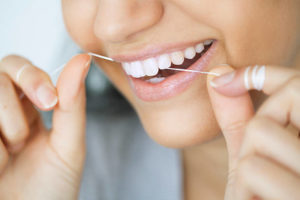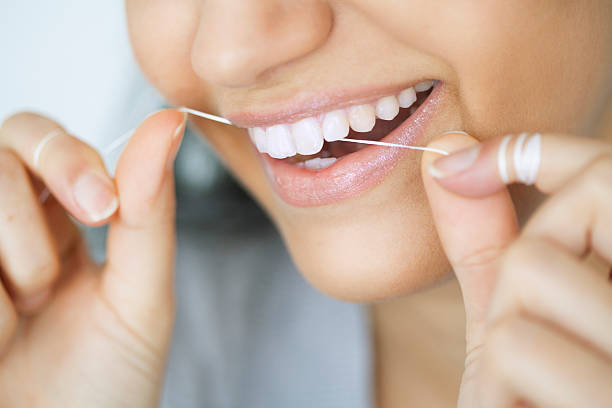How to Floss Properly: Step-by-Step Guide to Flossing Teeth
 Flossing is an essential part of your oral hygiene habit. It dislodges and cleans food particles stuck in between the teeth – particles that regular tooth brushing cannot remove – reducing the number of bacteria and plaque in the mouth. Plaque is a sticky film that builds up on the surface of the teeth, contributing to the formation of cavities and gum disease.
Flossing is an essential part of your oral hygiene habit. It dislodges and cleans food particles stuck in between the teeth – particles that regular tooth brushing cannot remove – reducing the number of bacteria and plaque in the mouth. Plaque is a sticky film that builds up on the surface of the teeth, contributing to the formation of cavities and gum disease.
Steps-by-Step Guide to Proper Flossing
Many people brush their teeth every day, but not everyone flosses regularly. In fact, studies have shown that only 4 in 10 Americans floss their teeth. Of course, simply flossing is not enough; you need to floss correctly. You might not know it but improper flossing can damage the teeth and gums. If you are not sure how to do so, here is a step-by-step guide to flossing teeth.
- Break off 18 to 24 inches of dental floss. Hold it correctly by winding most of the floss’ length around both middle fingers. Leave 1 or 2 inches for the actual flossing.
- Hold the dental floss taut with your index fingers and thumbs.
- Place the floss between two teeth and gently glide it up and down so that it rubs against both sides of each tooth. Never glide the floss into the gums as it can cause some scratching or bruising.
- Once the floss reaches the gums, curve it at the base of the tooth so the floss can enter the space between your teeth and gums.
- Repeat the above steps as you move from one tooth to another. Make sure that you use a new, clean section of the floss with each tooth.
Common Flossing Mistakes to Avoid
There are a few common flossing mistakes that many people make. Sometimes, they are not aware that they are flossing wrong. Improper flossing can cause bleeding and pain, or will just not give you the optimal tooth cleaning results. Take note of the common mistakes to avoid listed below.
- Being too aggressive. If you aggressively push and pull the floss into the gums, you can cut or injure gum tissue. If you have inflamed gums because of gingivitis, leading to bleeding gums.
- Not flossing the sides of the tooth. If you floss without wrapping the floss around every tooth in a “C” shape to hug the tooth, you are not flossing thoroughly.
- Popping the flossing in and out. If you are merely popping the floss in between teeth and popping it back out, you are not properly cleaning the biofilm on the surface of the tooth.
- Not flossing enough. Not flossing every day, or not flossing enough, can be a big mistake. Many people only floss when they feel that something is stuck in between their teeth. Studies have shown that a combination of brushing and flossing significantly reduced the risk of gingivitis compared to brushing alone.
Proper Flossing with Braces
Flossing when you have braces can be tricky. Plus, it takes more time compared to flossing without braces. If you are using regular floss, allow 10 to 15 minutes to floss your teeth. If you can opt for waxed floss as they are less likely to tear and get stuck in your braces. Other options that work well for flossing with braces include a water flosser and a floss threader, which helps you thread the floss under your braces. Both of these options should save you time.
Flossing is an important habit to practice daily. It does not matter if you prefer to floss in the morning or the evening, as long as you do it once a day. It is also crucial to use the right flossing technique to ensure that you are effectively cleaning your teeth and gums. If you experience bleeding or any discomfort, do not hesitate to contact a dental professional.





 |
|